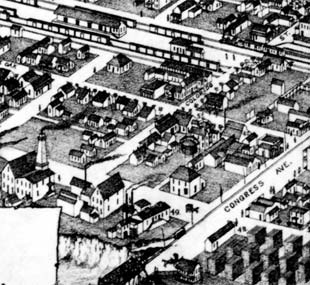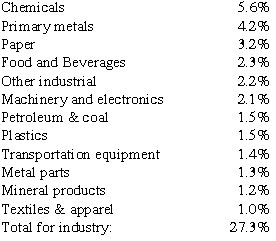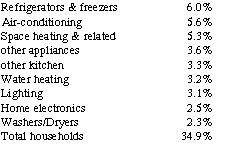


|
|
| Feedback |
|---|
Real Resources Review: A little makes a lot?I sent John Busby's 7th August article to a friend who understands more about nuclear power than I do. His reaction was that 'Mr Busby is not conversant with the concept of pebble bed reactors'. I would like to ask Mr Busby how he views that technology and whether he would care to tackle it in an article for the uninitiated like myself? Kind regards, Paddy Imhof
The problem is that mining of uranium is running down, whatever form of reactor is envisaged. See Die Welt which reports the imminent closure of some of the French reactors due to fuel shortages. The thorium alternative and fast breeders are dependent on vast development programmes which with the rapid and progressive failure of the nuclear industry will never be funded. As far as the pebble bed reactor is concerned it depends on the integrity of the pebbles and as these contain graphite this is likely to lead to the demise of this technology. The seven UK AGR's are likely to close prematurely as the graphite moderator blocks are disintegrating due to the irradiation which causes structural breakdown. Also there is an overheating due to the Wigner Energy effect which leaves a residual heat in the graphite. The gas-cooled fast reactor is also an unlikely candidate for funding for this reason as it relies on graphite moderation. The nuclear lobby in desperation is arguing that uranium can be extracted from the earth's crust and seawater and looks to fast breeders to generate ever more plutonium. All of which is fantasy. We do not have to wait too long for some of the
lights to go out in France, which will hopefully lead to a reality
check! |

| Singing the nation electric, Part 1: Fuels and Electrical Use |  |
 |
| By Jon Rynn | |
| Jul/12/2007 | |
|
The first task would be to finish the electrification of society that was temporarily postponed by the discovery of large amounts of petroleum within the crust of our planet. Since most electricity is currently generated from fossil fuel-based utility plants, that means that we will need some other way to generate electricity. But we also need to address the last question before we get on with the job of total electrification: why not use some other source of fuel for our energy needs, such as biofuels? Wikipedia defines a fuel as “any material that is capable of releasing energy when its chemical or physical structure is altered. Fuel releases its energy either through chemical means, such as combustion, or nuclear means, such as nuclear fission or nuclear fusion”. Webster’s definition is a little more succinct, “a material used to produce heat or power by burning”, or “a material from which atomic energy can be liberated especially in a reactor”. Leaving aside nuclear fuel, then, we need something that can be burned. Wood was the main fuel before coal, to be followed by petroleum and natural gas. People blithely assume that some new technology will pop up
from somewhere to save us from the disappearance of fossil fuels,
because “we’ve always invented something new”. No we haven’t.
Particularly in America, the entire suburban structure of the
country is based on a nineteenth century anachronism. Burn, baby, burn
Second, and less well-understood, burning can result in huge
losses of energy; in other words, burning is an inefficient process.
When the first coal-burning plants were used by Thomas Edison to
produce electricity, he was able to use only about 4% of the energy
from the coal, but much of the rest of the energy was captured as
heat, and since the power plants were in New York City, much of the
waste heat was used. The consolidation of utilities led to much more
efficient generation of electricity by coal-fired plants, up to 30%,
but the use of the waste heat virtually disappeared, because the
plants were now located outside the cities. Now, fully 67% of the
energy from coal plants is wasted, because burning things generates
more energy in the form of heat than in the form that we want.[1] Third, and following from the first two, burning fuel in transportation equipment like cars, planes, and trains is incredibly inefficient because most of the energy escapes—again, in the waste of heat[2]—and the ensuing pollution significantly increases the hidden cost of such burning. At least in the case of cars and trucks, this burning is the result of relying on something called the internal combustion engine.
People should keep this in mind when they blithely assume that some new technology will pop up from somewhere to save us from the disappearance of fossil fuels, because “we’ve always invented something new”. No we haven’t. Particularly in America, the entire suburban structure of the country is based on a nineteenth century anachronism. Oh biofuels, how do I hate thee? Let me count the ways.The emerging elite consensus is that biofuels can be used as a replacement fuel for peroleum. There are many reasons this will not work in the long run. The best article I have found is called “Peak Soil”.[3] There are two additional reasons, besides the problem that there isn’t enough land:
First, the reason fossil fuels have so much energy is not because they have trapped solar energy. The energy from fossil fuels comes from the Earth’s energy, that is, geological forces that cooked the plant life under great pressure for millions of years, and so biofuels can’t possibly get anywhere near the same energy potential as fossil fuels The energy coming from the Earth’s crust and mantle are inherited from the Earth’s formation billions of years ago, and as important as the Sun is, the Earth can proudly claim ownership of its own energy sources. Fossil fuels are not really plant-derived fuels, they are Earth-derived fuels, and people should not think that there is any link between the two. Plants use solar energy to suck the carbon out of the atmosphere, the hydrogen out of the water, and put them together to form a hydrocarbon. If anything, plants make the situation worse, energy-wise, because they proceed to attach the hydrocarbons to other structures in the plant, thus making the hydrogen more difficult to use. Hydrogen and oxygen are the main actors of the combustion process; the carbon is a convenient place to attach hydrogen. That is why oil is better than coal, because it is basically composed only of carbon and hydrogen; oil is derived from algae, which don’t process the hydrocarbons as much as the more developed plants that make up coal. In effect, the Earth’s geological forces undid the “damage” that the plants did using solar energy, by purifying the plant matter back into carbon and hydrogen.
Out, out, damn fuels!Second, and a point that others have made, biofuel production threatens the biosphere of the planet. There is a mass extinction looming, being driven by the destruction of ecosystems, in particular forests and grasslands and water systems. The issue of mass extinction is starting to coalesce among scientists,[4] but the general problem of habitat destruction, or more ominously ecosystem destruction, could be even worse. To simplify the problem as much as possible: even without global warming, at the rate we are going we are heading toward a Desert Earth, because most of the soil and water that can grow plants is being destroyed.
Historically, deforestation occurred in order to make room for
The demise of British forests led to the greater use of coal, thus helping lead to the Industrial Revolution. Today, forests are still being destroyed for the same three reasons, but with more people around, the destruction is proceeding apace. While the destruction based on energy use has been restricted to poor people, mostly for cooking, the hysteria that may arise in the developed world from dwindling oil supplies could lead to redoubled efforts to exploit every available nook and cranny on the planet.
King CONG is deadAgain, assuming that nuclear fuels have many of the same problems as other fuels, then it is reasonable to argue that coal, oil, nukes, and gas (King CONG, to use Harvey Wasserman’s phrase), and, in fact, all fuels, are doomed. We need to create a fuel-free society. As it so happens, much of 19th century science and much of 20th century technological development was focused on the development of a different source of energy: electricity. Electricity has a number of advantages.
In short, everything fossil fuels do electricity can do better. Actually, there is one thing that fuels are better constructed for: storage. However, there are many creative solutions being offered for this problem, the most straightforward being to pump water to a higher elevation and use it as hydropower when needed.[5] And hydrogen can be used for storage, although for any other reason one can think of, hydrogen will not save fuels from extinction. Unfortunately, at the present time, not only is most electricity generated from fossil fuels, but if we wanted to convert the biggest user of petroleum, transportation equipment, from fuel use, the demand for electricity would go up, as would occur if we replaced the natural gas used for cooking, heating, and cooling. In a following article, I will suggest how fossil fuels could be augmented with renewable technology. First, we need to understand how electricity is currently used, so that we can understand how to restructure society so that we can either use less electricity or generate it sustainably. By the numbers |
 |
| Register Free to receive updates of latest stories |
|---|
| Polls |
|---|

 Let’s assume
that we will eventually live in a world without fossil fuels, that
is, without petroleum, coal, or natural gas. Will we all starve to
death or devolve into roving bands of barbarians? If business as
usual continues indefinitely, those outcomes are definitely
possible, but let us further assume that reason will prevail and we
all agree to restructure society so that it could get along without
fossil fuels. What would we need to do?
Let’s assume
that we will eventually live in a world without fossil fuels, that
is, without petroleum, coal, or natural gas. Will we all starve to
death or devolve into roving bands of barbarians? If business as
usual continues indefinitely, those outcomes are definitely
possible, but let us further assume that reason will prevail and we
all agree to restructure society so that it could get along without
fossil fuels. What would we need to do?
 Only
specialists in technological history would know what an internal
combustion engine is if it were not for petroleum. The only reason
such an incredibly inefficient device could be used on such a wide
scale is because it is uniquely adapted, like some superspecialized
organism in some freaky part of an isolated ecosystem, to the
extraordinary energy potential of oil. The internal combustion
engine is the brother of the external combustion engine, or as it is
better known, the steam engine. The steam engine is long gone, and
so, too, should have been the internal combustion engine. The
diesel-electric and electric train and the jet are much newer
technologies—the airplane is a newer technology. The internal
combustion engine was invented before the electricity-generating
electric turbine. It is a very old technology, completely unsuited
to a post-fossil-fuel world.
Only
specialists in technological history would know what an internal
combustion engine is if it were not for petroleum. The only reason
such an incredibly inefficient device could be used on such a wide
scale is because it is uniquely adapted, like some superspecialized
organism in some freaky part of an isolated ecosystem, to the
extraordinary energy potential of oil. The internal combustion
engine is the brother of the external combustion engine, or as it is
better known, the steam engine. The steam engine is long gone, and
so, too, should have been the internal combustion engine. The
diesel-electric and electric train and the jet are much newer
technologies—the airplane is a newer technology. The internal
combustion engine was invented before the electricity-generating
electric turbine. It is a very old technology, completely unsuited
to a post-fossil-fuel world. Another way
to look at it is this: it takes plant-eating animals 16 hours a day
of munching on plants to extract enough energy to survive, while
large carnivores like lions only need meat once a day, at most.
That’s why humans evolved to eat meat; if they had to eat only
plants, like our relatives the gorillas, we’d be munching all the
time, with no time left over for making things. Plants are a poor
source of energy.
Another way
to look at it is this: it takes plant-eating animals 16 hours a day
of munching on plants to extract enough energy to survive, while
large carnivores like lions only need meat once a day, at most.
That’s why humans evolved to eat meat; if they had to eat only
plants, like our relatives the gorillas, we’d be munching all the
time, with no time left over for making things. Plants are a poor
source of energy.





